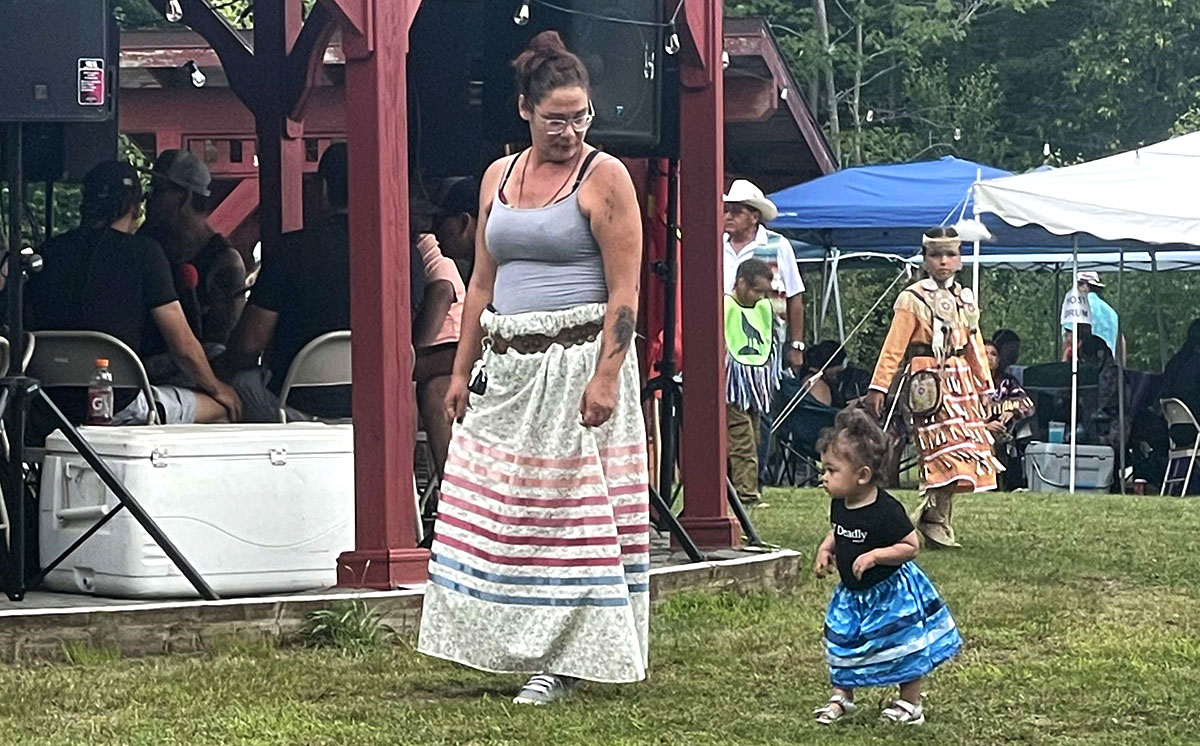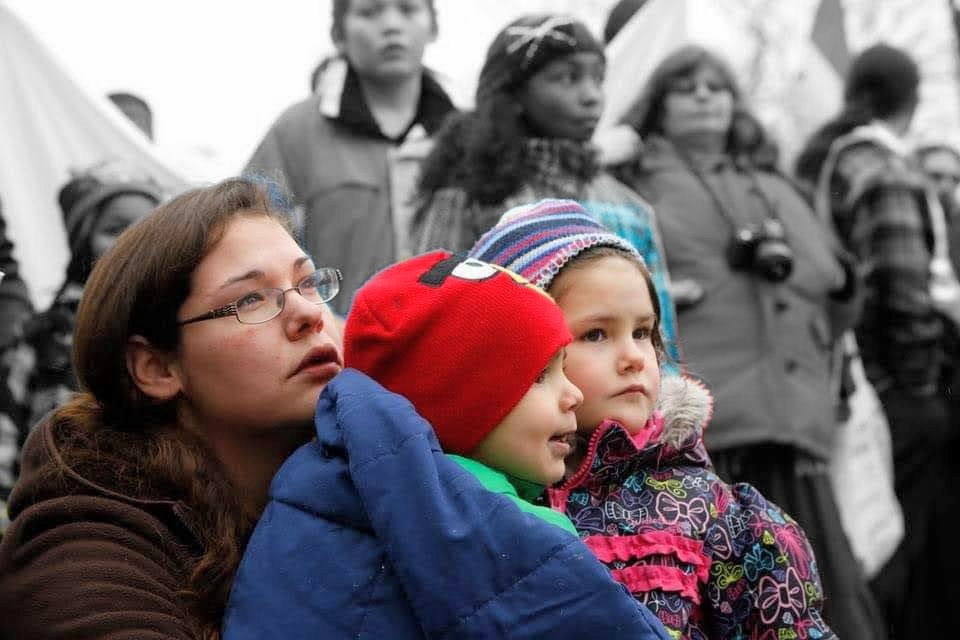National Indigenous Peoples’ Day: This is me, Amanda
Last updated onOn June 21 we recognize National Indigenous Peoples’ Day – a day dedicated to honouring the unique cultures and achievements of Indigenous Peoples, including First Nations, Inuit and Métis peoples in Canada.
This year, we spoke to Amanda Cress, Indigenous Relations Lead for Northern Ontario, who shares her First Nation heritage and pride for her Indigenous roots.
Meet Amanda
My spirit name in Aashi Migizi Kwe (Flying Eagle Woman). My given name is Amanda and I joined TC a year and a half ago as the Indigenous Relations Lead for Northern Ontario, based in North Bay, ON. I am a proud member of the Garden River First Nation (Ketegaunseebee in Ojibway, or “The Creator’s Garden”) and I am from the Ma’iingan Dodem (Wolf Clan). In my free time, I love to go on outdoor adventures with family and friends, including camping and fishing. I also enjoy attending concerts, family gatherings and ceremony. I have three “humans” (my grown children), a two-year-old grandchild and another one on the way.

A path of self-discovery
Growing up as an urban First Nations person, I knew I was an Anishinabee (First People) but I felt disconnected from my cultural heritage because colonial systems like residential school and day schools disrupted our traditional knowledge transmission, creating gaps in how traditional practices were passed down. This limited my cultural experiences in many ways.
Despite these challenges, I come from simple, humble beginnings with a strong family foundation. As the second oldest among my siblings, I was raised by matriarchs and role models who taught me to be resilient, while remaining compassionate and caring. At the heart of my upbringing was laughter – my many aunties and uncles always found reasons to laugh, even during difficult times. These valuable life skills sustained me when my mother passed away. During that time, my Uncle Willard became pivotal in guiding and immersing me back into my First Nations culture.
While many relatives influenced me, Uncle Willard was one of my most impactful teachers. The wisdom he shared with me now flows to my children, grandchildren, communities and friends. He taught me practices like saying “Miigwetch” (thank you in Ojibway) each morning to express gratitude to the Creator for another day, which is never guaranteed. He helped me understand our interconnected responsibilities – how wind, plants and air all have their own spirits and purposes on Mother Earth. Through my lived experience, cultural teachings and understanding of my place in this world as an Anishinabee Kwe (Woman), my engagement with my culture, both personally and professionally, reflects the resilience and strength of being an Indigenous person.

Honouring traditions
I made it a point to teach my children about their heritage by taking them to ceremonies. Each child attended a ceremony to be adopted into their clans at a young age, as in my tribe, the clan lineage follows the father – who, in my children’s case, is not Indigenous. The clan system helps us understand our purpose in life and how the community works together as a whole. I am part of the Wolf clan – which is a part of the Martin Clan – known as protectors, storytellers, warriors and providers. The Turtle clan offers intellectual guidance, philosophy and mediation; the Bear clan are our Medicine men/women and peace officers; the Deer or Hoof clan are our listeners and problem solvers; the Eagle clan provides spiritual leadership; and the Crane and Loon clans are our leaders.
My family attends powwows and cultural gatherings , which bring the community together to celebrate, pray and honour traditions. A traditional powwow begins with the lighting of a sacred fire, which carries our prayers up to the Creator, and a sunrise ceremony to honour the sun rising another day. During grand entry, drums resound as representatives – including Elders and guests of honour – carry Eagle Staffs and flags followed by different styles of dancers. This moment fills me with an overwhelming feeling of acceptance and connection to the Earth. It’s a beautiful cultural celebration I encourage everyone to experience.
Looking forward
The history of powwows is a powerful testament to the resilience and determination of my people. For a long time, powwows were illegal under the Indian Act, a law meant to suppress our cultural practices . Participating in these gatherings came with the risk of legal consequences. Despite efforts to silence us, our communities’ spirit never broke. Today, powwows are celebrated across the nation, reminding us of our ability to overcome and thrive.
Recognizing National Indigenous Peoples’ Day is incredibly important to me for these reasons. It’s a way to honour the continued presence of Indigenous communities, despite historical efforts to erase us. It’s also about celebrating the achievements and resilience of Indigenous peoples who are thriving in so many fields – law, government and beyond – by breaking barriers and moving from marginalized positions into influential roles.
It brings me joy to be on TC’s Indigenous Relations team. As a community-driven person, connecting with First Nations in my role energizes me. I’m proud knowing we stand together collectively, reflecting on how far we have come.
I consider myself a pretty quiet individual and only speak when it is important. With that in mind, I know how important it is to leave behind a legacy and let people know that “this is me.”